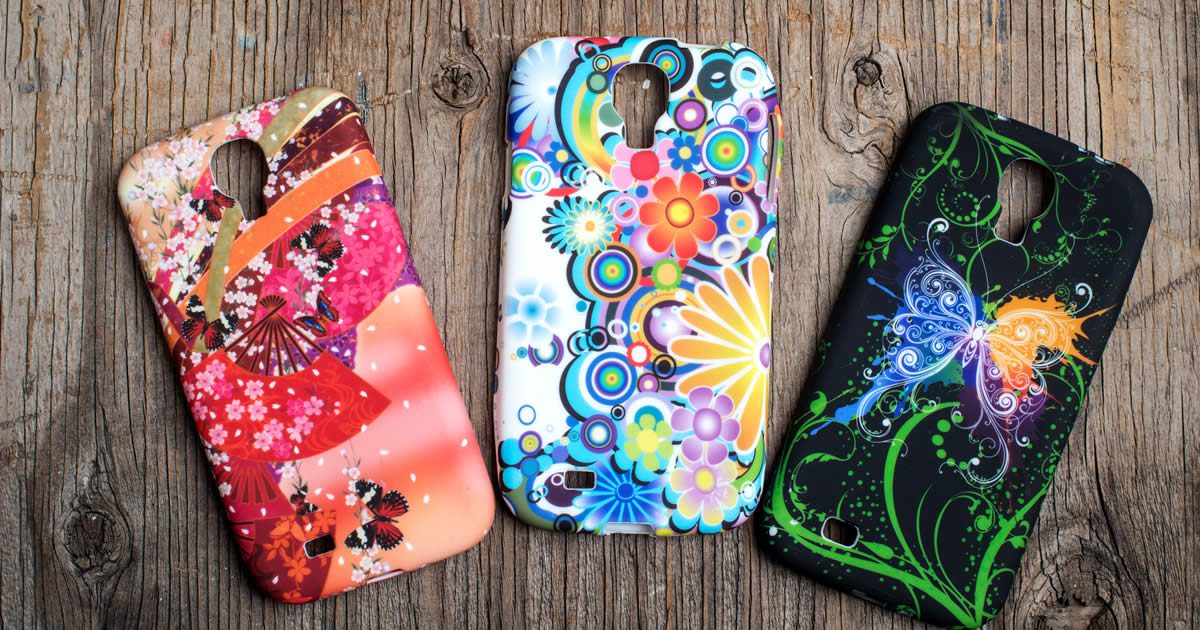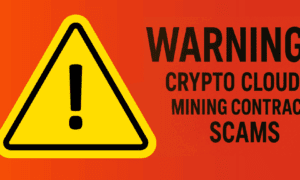The global smartphone market has reached over 6.8 billion users, with device customization becoming a defining trend among consumers seeking personal expression. Custom phone cases represent a thriving segment within this ecosystem, where creative entrepreneurs can enter with surprisingly low barriers. The challenge many aspiring business owners face isn’t identifying the opportunity—it’s launching without substantial capital reserves or manufacturing infrastructure. This guide provides a practical roadmap for starting a phone case business using wholesale custom phone cases as your foundation, eliminating the need for expensive equipment or large inventory investments. You’ll discover proven strategies for sourcing affordable suppliers, creating marketable designs, and leveraging free marketing channels to build a profitable venture. Whether you’re a side-hustler testing entrepreneurial waters or someone ready to build a full-time income stream, these low-cost methods make the phone accessory market accessible starting today.
Understanding the Custom Phone Case Market Opportunity
The global phone case market reached $25 billion in valuation recently, with custom designs commanding 30-50% higher profit margins than generic alternatives. This growth stems from consumers treating smartphones as fashion statements rather than mere communication tools. Your ideal customers span multiple demographics: Gen Z buyers seek meme-inspired and trending designs, millennials gravitate toward minimalist aesthetics and personalized photo cases, while niche communities—gamers, pet owners, fitness enthusiasts—actively search for accessories reflecting their identities. Profit margins in this space typically range from 40-70% when sourcing wholesale custom phone cases, compared to 15-25% in traditional retail. Successful niche identification separates thriving businesses from struggling ones. Analyze emerging pop culture phenomena through social listening tools, explore underserved communities like specific fandoms or professional groups, and consider sustainable materials attracting eco-conscious buyers. Geographic targeting also works—local sports teams, university mascots, or regional pride designs create built-in customer bases. The key advantage for bootstrapped entrepreneurs is that you’re not competing on manufacturing capacity but on creative relevance, making this market accessible regardless of your starting budget.
Finding Affordable Wholesale Custom Phone Case Suppliers
Evaluating Reliable Suppliers
When sourcing wholesale custom phone cases, prioritize suppliers with minimum order quantities (MOQs) below 50 units—many print-on-demand services require no minimum, letting you test designs risk-free. Pricing tiers typically range from $2-$8 per case depending on materials and printing methods, with UV printing offering durability at mid-range costs while sublimation provides vibrant colors for polymer cases. Domestic suppliers ship faster (3-7 days) and simplify returns, though overseas manufacturers offer 30-40% lower unit costs with 2-4 week lead times. Always order sample cases before committing—inspect print quality under direct light, test corner drop resilience, and verify button accessibility. Check supplier reviews on independent platforms beyond their website, confirm they provide legally required safety certifications for materials, and ensure they offer artwork templates matching your design software. Red flags include suppliers refusing samples, lacking clear refund policies, or pressuring large upfront orders.
Top Sourcing Platforms
Alibaba remains viable for bulk orders—use filters to find “Trade Assurance” verified suppliers, sort by transaction levels above $100,000, and search specifically for “sublimation phone case blanks” to find customizable inventory. For zero-inventory models, Printful and Printify integrate directly with Shopify, handling production and shipping with per-unit costs around $8-$12 but eliminating storage needs. Wholesale directories like SaleHoo ($67 annual fee) vet suppliers and provide pricing benchmarks, while Faire offers net-60 payment terms for qualified buyers, preserving cash flow during launch phases. Regional wholesale markets also work—attend local trade shows where you can negotiate face-to-face and inspect physical samples immediately, often securing better terms than online platforms for ongoing relationships. Established manufacturers like Runsun Case also offer wholesale programs with flexible MOQs, providing options for entrepreneurs seeking reliable production partners with consistent quality standards.
Low-Cost Business Setup Strategies
Dropshipping through print-on-demand services eliminates upfront inventory costs—platforms like Printful handle production and shipping automatically when customers order, though per-unit costs run $3-$5 higher than bulk purchasing. Alternatively, holding 20-30 units of your top designs reduces fulfillment time to 1-2 days and cuts unit costs by 40%, requiring just $150-$300 initial investment with proper niche targeting. For home operations, you’ll need only packaging supplies ($30 for 100 poly mailers), a postal scale ($15), and shipping label printer ($80 optional but saves time). Legal essentials vary by location but typically include a business license ($50-$200), sales tax permit (often free), and basic liability insurance ($300-$500 annually through providers like Hiscox). Register as a sole proprietorship initially to avoid LLC formation costs until revenue justifies it. Launch sales through Etsy ($0.20 per listing, 6.5% transaction fee) to access built-in traffic, or use Shopify’s $1 trial month then $39/month plan with abandoned cart recovery features. Square Online offers a permanent free tier with 2.9% payment processing, ideal for testing market response before committing to subscriptions. Start with one platform, validate your concept with 10-20 sales, then expand channels as cash flow permits.
Designing Profitable Custom Phone Cases
Winning designs balance visual impact with broad appeal—avoid overcrowded layouts by limiting elements to three focal points, use high-contrast color combinations that remain visible in thumbnail images, and incorporate negative space so designs don’t feel claustrophobic on the actual product. Free tools like Canva provide phone case templates with correct dimensions (typically 3000×3000 pixels for print quality), while GIMP offers advanced layering for complex artwork without subscription costs. Photopea works entirely browser-based for quick edits when away from your main computer. Research trending designs by monitoring Etsy’s bestseller lists in the phone accessories category, tracking hashtags like #phonecase and #iphonecase on Instagram to spot emerging visual themes, and using Google Trends to identify rising search terms related to pop culture events. Copyright compliance protects your business—create original artwork, purchase commercial-use licenses from sites like Creative Market ($5-$20 per design element), or use public domain resources from Unsplash and Pixabay. Never copy competitor designs directly or use celebrity images without licensing agreements. Test design viability before production by posting mockups in relevant Facebook groups or Reddit communities, asking for feedback on which variants resonate most. This validation step prevents investing in designs that looked appealing in concept but fail to convert actual buyers.
Marketing Your Phone Case Business on Social Media
Platform-Specific Strategies
Instagram drives phone case sales through visual discovery—post product photos with lifestyle contexts showing cases in hands or on desks rather than isolated white backgrounds, use all 30 hashtags mixing popular terms like #phonecase (50M+ posts) with niche tags like #botanicalcase or #gamergear (under 100K posts), and leverage Stories’ polling features to let followers vote on new designs, creating investment before launch. Post consistently at 11am or 7pm when engagement peaks, and create Reels showing 15-second design reveals or unboxing experiences that Instagram’s algorithm prioritizes. TikTok converts through entertainment over selling—film “design process” videos showing your creative workflow, participate in trending sounds by incorporating your products naturally, and use the “stitch” feature to respond to users asking about phone protection or style tips. The platform rewards 3-5 posts weekly with authentic, unpolished content over professional ads. Pinterest functions as a visual search engine where users actively seek products—create vertical pins (1000×1500 pixels) with text overlays describing design themes, organize boards by categories like “Minimalist Phone Aesthetics” or “Floral Case Designs,” and include keyword-rich descriptions since 97% of Pinterest searches are unbranded. Link pins directly to product pages, as Pinterest users demonstrate 30% higher purchase intent than other platforms.
Budget Advertising Techniques
Micro-influencers with 5,000-50,000 followers deliver better ROI than celebrity partnerships—offer free products plus 10-15% commission on sales through their unique discount codes rather than flat fees, target accounts whose audience demographics match your niche using tools like HypeAuditor’s free tier, and request Instagram Story posts or TikTok videos rather than feed posts to access their most engaged viewers. User-generated content costs nothing and builds social proof—create a branded hashtag, repost customer photos to your feed with credit, and incentivize submissions through monthly giveaways where entries require posting with your product and tag. This generates authentic content while expanding reach through customers’ networks. Retargeting ads maximize limited budgets by focusing on warm audiences—install Facebook Pixel on your website, create custom audiences of cart abandoners or product page visitors, and run $5 daily campaigns showing those specific viewers the exact products they considered. Use dynamic product ads that automatically display the items each person browsed, with carousel formats showcasing multiple designs to increase relevance and conversion rates beyond cold traffic campaigns.
Scaling and Optimization Tactics
Implement inventory management through spreadsheet tracking initially—record SKU numbers, reorder points when stock hits 5 units, and sales velocity to identify fast movers deserving restocks versus slow designs to discontinue. Graduate to free tools like inFlow’s starter plan once handling 50+ monthly orders. Boost average order values through strategic bundling—offer “buy 2, get 15% off” promotions, suggest matching pop sockets or screen protectors at checkout, and create themed bundles like “couple’s set” or “family pack” that increase cart totals by 35-60%. Retention drives profitability since acquiring new customers costs five times more than repeat sales. Launch email sequences capturing addresses at checkout, sending post-purchase care instructions after 3 days, then discount codes at 30-day intervals. Loyalty programs offering every fifth purchase free cost nothing to implement and increase lifetime value. Analyze Google Analytics weekly to identify which traffic sources convert best, which product pages have high bounce rates needing better images or descriptions, and which designs generate repeat purchases worth expanding into variations. Adjust pricing by testing $2 increases on bestsellers—most customers won’t notice while margins improve significantly, funding reinvestment into inventory depth and new design development that compounds growth.
Launch Your Phone Case Business Today
Starting a profitable phone case business requires just four foundational steps: identify reliable wholesale custom phone cases suppliers with low MOQs and competitive pricing, create original designs using free tools while respecting copyright laws, launch through zero-cost platforms like social media or low-fee marketplaces such as Etsy, and drive traffic through organic Instagram posts, TikTok content, and strategic micro-influencer partnerships. This accessible model demands minimal upfront capital—often under $500—making it ideal for aspiring entrepreneurs testing business concepts without financial risk. The phone accessory market’s consistent growth and high profit margins create sustainable income potential when you focus on niche audiences and authentic engagement over expensive advertising. Begin today by ordering sample cases from three suppliers, sketching five design concepts based on trending searches, and setting up a free Instagram business account to document your journey. As sales validate your approach, reinvest profits into inventory depth and expanded product lines, transforming a side venture into a scalable business. The barrier to entry has never been lower, and the market continues rewarding creativity and customer connection over large budgets.





























